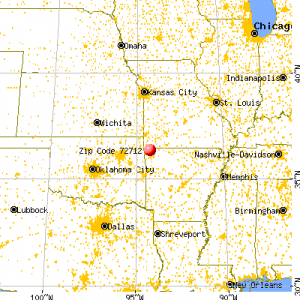The ride from Kansas City, Kansas, to Bentonville, Arkansas, was all gentle terrain underneath low cloud cover, soft cottony batting with tufts reaching down toward us, picked out by warm light. There is little to see, not even much autumn color in the trees that rim the fields. My Dear One selected the “Country-Folk” playlist and the feel of the road was one with those songs. I sang along when I knew the words, hummed when I didn’t.
We passed the turn off for Tulsa, Oklahoma, and I briefly flashed on a visit there in 1981, time with a girl friend whose name I no longer remember. We went to dinner at a restaurant that was part of a private club for professionals in the oil industry; it was regarded as the best restaurant in town but the food was unexceptional. We took in a performance of Gounod’s Romeo and Juliet, which I enjoyed. We visited to the Philbrook and Gilcrease art museums and attended a sort of 1950s “prom,” a strange event emceed by a local wag who, as “Oral Love,” spoofs on Oral Roberts, the founder of Tulsa’s Oral Roberts University. We dressed for that out of a closet at her parents’ home that was filled with decade’s worth of prom wear.
We passed by Joplin and started to think about lunch. Highway signs offered only gas stations and a lonely Denny’s until finally we came up on Neosho and a stretch of fast-food bounty. We came down off the ramp and at a stoplight turned left following an arrow toward McDonald’s. It was a ways down that road but we found it—and found it mobbed.
But what a place—straight out of Ozarks central casting. It was crowded with locals: multi-generational families, chunky boys in muddied football uniforms; canoodling teens dressed in fancy-dress, shiny warm-ups. I couldn’t stop admiring the décor: complicated chandeliers constructed from interlocking antlers, walls like ersatz log cabins, fake stonework and a non-functional fireplace, wall sconces with laced shades, something you might expect to find in a store catering to those with a taste for frontier design.
A twig of a girl stood in line ahead of me. Her blue denim skirt brush the floor and her straight, chestnut hair—gleaming and smelling faintly of flowers—fell past her knees. She asked where I was from, volunteered that she lives in Kentucky but attends a Bible college nearby and was staying over during fall break to catch up on work and relax. She was sweet and, I think, a little lonely. She couldn’t have been more than eighteen. She was taking the basic course, I guess something focused on a lot of Bible reading and prayer. When we left, she was alone in a booth, bent over a book, a drink cup nearby.
Below Neosho, the road rises and the Ozark foothills give the scenery a rugged aspect. Limestone cliffs left when the highway was cut through show the layers of primordial sediment, pale gray at the top, ochre-brown midway, almost black at the bottom. This was, after all, once the bottom of the ocean.
Suddenly a sign welcomed us to Arkansas. Scrubby forest and stone gave way to miles of manicured golf courses on both sides of the road, expensive-looking developments and shopping centers, and on the northbound side, an endless traffic jam. The Bentonville town limit was marked by a sign gave a population of 35,000 and something, and My Dear One said, “Everyone of them is on the road.” We continued on, following Blessed Fiona into the adjacent community of Rogers, where we had a room at the Homewood Suites. There we were informed that the War Eagle Mill sponsors an annual fall craft fair and that it was very popular. Very popular, we agreed.
We opted for a movie (“Gravity”), dinner (“Carrabba’s Italian Grill”) and an evening doing laundry and watching the Red Sox defeat Detroit for the American League Pennant. Rogers seems to be a vast array of hotels, restaurant chains, department and specialty stores, and multiplex cinemas, all of it laid out in generic but shiny, well-landscaped and new complexes of glass and concrete. It was indistinguishable from similar locales in Florida, Arizona and California. The atmosphere was busy (Missouri drivers seem relaxed and polite; these Arkansans drive like rednecks who have upgraded from pickups to luxury sedans). The feeling was that of prosperity, even wealth. There seemed no evidence of years of economic slump, none of anxiety provoked by the sequester and recently ended government shut-down.
Can Walmart as an employer so successfully insulate the community around its headquarters from economic difficulties and downturns?
I find the thought unsettling.

